A blog about freshwater aquarium!
Last active 3 hours ago
Don't wanna be here? Send us removal request.
Note
hey, i just saw ur best beginner fish post, but i noticed that the molly/platy section wasn’t completely correct. mollys usually grow to 3-5 inches, and need a 15 gallon tank at least (and even that’s pushing it). platies on the other hand, only grow to be around 2.5 inches. great post tho, i completely agree with ur picks!
Thank you for the message! I’ll make sure to update that information.
2 notes
·
View notes
Note
So I have been wanting to get a new light for my 10 gallon so I could start working with live plants. I have no idea what works best, and I am kinda on a budget of $30 or less. I would prefer something that could keep some easier plants alive. Thanks
There are a variety of not very expensive lights that are fullspectrum (what you need to grow plants), some are more intense than others. If you’re growing easy-going plants you don’t need to worry much about brightness. Here are two I have experience with.
NICREW SkyLED Aquarium Light Planted Tanks, Full Spectrum Freshwater Fish Tank Light
The light on this isn’t super bright and it comes in different sizes and isn’t too expensive. I use it on my betta tank. Make sure you get the right size, I mistakenly ordered the smallest size and it was sooper tiny! Do NOT use it on a tank without a lid.
Sadly it looks like the one I use on my 20 gallon isn’t on Amazon (you should be able to find it at local fish stores or your big pet store chains)
Aqueon Aquarium Black 20" Fluorescent Deluxe Full Hood
There are a few differences between Fluorescent vs LED, LED lasts much longer (and you have to replace the full unit unless you know how to fix it yourself) but to get really bright LED is a lot more expensive. With Fluorescent you can just replace the bulbs and they tend to be brighter.
Since you’re working on a lower budget I would suggest the fluorescent hood setup, it has a complete coverage and you can just break out a portion of the back (it has perforations so you can do this) to fit the filter.
However, if you already have a lid then you can go for the LED.
The thing about planted tanks is you need to be careful about the plants you pick. Some plants require a CO2 injection (which can be pricy and fiddly), there are however plenty of plants that aren’t as demanding!
7 notes
·
View notes
Text
Assassin Snails and Parasite Snails
youtube
If you’re unlucky enough to get a parasite snail in your tank and breeding out of control one of the possible options for keeping them in check is the assassin snail!
They are hard workers who will hunt down every snail they can find and eat it, however, they don’t go after snails larger than themselves (USUALLY) and I’ve had several in a tank with a nerite and no issues arose.
The other options to get rid of parasite snails are rather drastic, such as setting up a new tank and moving the fish into it and then cleaning the old tank and letting it sit dry for a time. Make sure to do the same with your filter and don’t move it to the new tank, it will need to remain dry for a while as well (I suggest a month).
The last option is copper sulfate. You can usually get it in dedicated aquarium stores, be VERY careful to follow the directions as it can become toxic to the fish if you use more than recommended. If you have live plants they can also ‘absorb’ it and you can’t use it in any tank with invertebrates (crabs, snails, shrimp) as it kills them mercilessly.
8 notes
·
View notes
Note
Any tips on how to clean silk plants? Mine have a crap ton of algea that won't come off wotg just rinsing them off, and it's starting to look really ugly!
I tend not to use artificial plants and prefer live planted tanks, but a few ways to clean artificial plants is unfortunately kinda tedious. You can get a toothbrush and attempt to scrub all the algae away. Most chemical products for killing algae can be toxic to fish so I suggest avoiding them.
A long term solution could be getting a nerite snail as they are some of the hardest working algae eaters and very easy to take care of. The only real important thing is that they have enough calcium in the water which is easy if you have a naturally high PH (7+) if not you can shells or cuttlebone to keep their shells healthy. Oh and a lid! A lid is required. I forgot to put the lid on my tank the other day and heard one go ‘Plunk plink plunk!’ down to the floor. Thankfully he was unharmed.
A third solution could be buying new ones!
6 notes
·
View notes
Note
Can dwarf puffers live by themselves, or do they need to be kept in pairs or something?
Dwarf pufferfish, like all pufferfish, are assholes. Giant. Jerk. Assholes. But they are super cute! They can be kept alone as they aren’t very sociable with their own kind but you can keep a few in a tank that gives them enough room to establish their own territories. (I’d suggest a few gallons per puffer, like around 5 gallons per fish).
Make sure they have a lot of hiding spots/caves/plants (fake or real). You can also visit an aquarium store and see if they have any parasite snails (bladder snails, turban snails) to put into the tank as pufferfish adore eating snails!
Good luck!
8 notes
·
View notes
Note
I want to eventually get African dwarf frogs again, but I want to do it right this time. I used to keep a couple in a standard 20 gallon with a betta. I fed them pellet food from Zoo Med, and had a heater and filter. For some reason they never lasted more than a couple months. I loved the little clowns, but I want to know how I can do a better job. What size tank, food, setup, ect.
For African Dwarf Frogs they need 10 gallons per frog, for a pair of them, I would suggest a 20 gallon long as they need sorta shallow water. Don’t use sand or small gravel substrate, pebble river rocks work well!
ADF also need hiding places so I would suggest some driftwood branches (buy them from reputable sources, not gathering them yourself. To help them sink and to sterilize them boil them in water, changing it till the water is clear). They get stressed without places to hide so put some plants in there (fake plants work fine).
Just like with fish their water needs to be dechlorinated and beneficial bacteria added. The water needs to be cycled too, that means letting the live bacteria build up.
Make sure to get a filter with a gentle flow, too strong or loud might stress them some. If you only have 2 frogs in a 20 gallon you could likely get away with water cleaning every 2 weeks unless the water starts to get murky. When changing the water make sure to add water conditioner and beneficial bacteria every time you do a water change.
For the food make sure not to overfeed them and offer a variety of foods. Any pellet food formulated for ADF is a good day to day one but you can try offering live food (such as brine shrimp or feeder fish of an appropriate size) you can also get little mixed treats that have different compartments with different kinds of food in them. Feed them once or twice a day unless they get chubs then cut back to once a day or once every other day.
So the rundown: 20 gallon long for 2 frogs water 6-12 inches deep, a gentle filter, good food (zoo med is a good quality food but mix in a variety, you can try frozen treats as well like brine shrimp and blood worms), regular water changes (at least once every two weeks unless the water gets icky faster), they don’t need special lighting, water needs to be between 69-79, get an internal heater that you can adjust the temperature and an aquatic thermometer, sudden temp changes will stress them.
Good luck!
6 notes
·
View notes
Note
I eventually want to convert my 10 gallon betta tank to a fully planted tank. I only have silk plants in there now, but once brown algea gets on them it never comes out. The light I have now is just a LED light that came with the hood, which I got at walmart. I tried java moss to see how it would do since a lot of people recommend it for low light, and it died. It turned brown and just kinda wasted away. Any tips?
Java moss prefers lower temps than are ideal for betta so I don’t suggest the two in the same tank. Christmas moss, however, grows great in my tanks!
Another low light plant that you can try is Anacharis which grows like crazy even without a grow light.
Good luck!
3 notes
·
View notes
Note
I saw your post about the best beginner fish, and noticed you said Cory catfish can be kept in a minimum of 10 gallons. How many could I safely keep in a 10 gallon? They would be the only fish in the tank.
Cory cats should be kept in schools so at least 5-6. They’re a bottom-dwelling fish but super cute with a lot of personalities!
2 notes
·
View notes
Note
my roommate received an aromatherapy diffuser, but i keep a fish tank with my betta in the room. she hasn’t bought any scents yet, but i know that many essential oils are harmful to pets like dogs or cats- should i assume the same applies to fish, and maybe are there are some specific ones that can harm them to avoid?
I would suggest not running it next to your fish tank, as then the oils could seep into the water. However, across the room (if a large room such as a living room) and especially in another room would be perfectly fine. Fish are especially sensitive to anything that gets into their water so it's always better to error on the side of not letting anything hinky get too close.
Chances are basically anything that gets in the water that isn’t fish approved products are not good for the fish. Some fish are more sensitive than others (Discus fish will die if you look at them funny), while others are more durable (betta are tough babes).
So: Across the room should be fine as long as the tank is not a lidless variety and particles aren’t spraying everywhere, another room = its all good!
6 notes
·
View notes
Text
Adding a New Fish
Adding a new fish to an established tank isn’t as easy as just dumping it in. A few steps ideally should be followed to make it as successful as possible!

When you already have a tank with fish in it adding a new one into it without following a few important steps first could put your whole aquarium in danger of an outbreak of disease or a spike in ammonia.
When getting new fish a serious aquarium hobbyist will quarantine them in a tank dedicated to that purpose. I understand that keeping an aquarium just for new fish isn’t for everyone so the following advice is for people with a single tank.
A good method of adding fish is getting a specimen container.

With this method, you can let the fish acclimate with your tank's temperature (important to prevent shock) and you can add a little bit of your tank water to the container while they adjust to the temperature so they can also adjust to the PH of your water. This is probably one of the more ideal ways of doing it but specimen containers can be oddly pricey.
Make sure you add some bacteria supplement to the tank before adding the new fish. I usually do it right before I add the new fish in.
If you don’t have a specimen container you can use the old fashioned method. Keep the bag closed and let it float for roughly a half an hour, don’t just dump the whole bag of water into your tank, this could bring all sorts of unpleasant things from the pet store along with it.
Remove the bag from the water, open it up (or cut it open) and pour it out into a bucket or container through an aquarium fish net then quickly move the fish from the net into your tank.
It’s best not to add too many fish at once unless you’ve been preparing for them as some fish are schooling and need to be in a minimum of five to six fish. When preparing for so many fish spend the days leading up to their arrival by adding a little extra bacteria supplement. Let the tank rest for a while after these new additions. I’d suggest a week.
Congrats on your new fish!
33 notes
·
View notes
Text
How to Cycle Your Aquarium
Today I’m going to be talking about one of the most important things you need to do before you even buy fish. If this step is skipped you’re setting yourself up for some dead or sick fish.
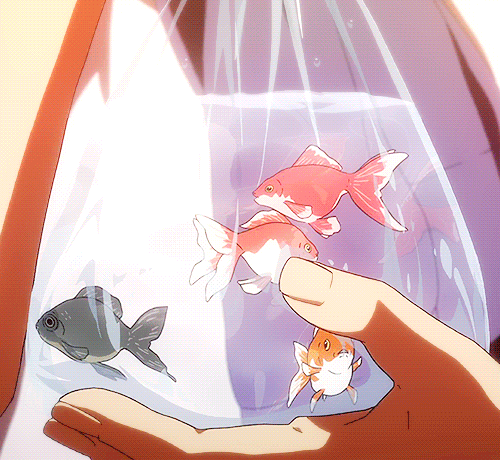
What Is Cycling?
This may be an unfamiliar term if you’re new to the hobby or returning to it. Growing up we often had fish but no one spoke about this! Even today you can go to a big box store, buy a new tank and some fish and it’s not likely anyone will mention this to you. Worse yet is there is a lot of misinformation about how to cycle your tank.
Fish produce ammonia, goldfish even produce it through their skin! Usually, it’s from their waste though. Now ammonia is poisonous and in the wild, there is an assortment of natural ways it’s taken care of. We reproduce this in our aquariums by using beneficial bacteria that turn ammonia into nitrites, then into nitrates, which are much less toxic than ammonia. A nitrate buildup is also dangerous but is taken care of with water changes.
How to Cycle Your Tank
There are a few different methods of cycling your tank and I’ll discuss them below!
1. Slow and natural.
This is a rather old-fashioned method and not one that’s all that commonly used these days as there are easier and faster methods. It’s really very simple though, you set up a tank, get the water in, add a tiny bit of fish food which then decomposes and produces ammonia. Over time beneficial bacteria are introduced gradually, through your skin, the air, from the water. This takes about a month and you can’t add fish until that month is up. A lot of people don’t really want to wait that long!
2. Quick and Dirty
This method isn’t one that I find the most humane but it can work, so there is that. In essence, you set up your tank, hopefully adding beneficial bacteria you picked up at the pet store and dechlorinating the water. Then you go out, buy a sacrificial fish, choosing a very hardy species that hopefully will survive this process, and just toss it in. The ammonia levels will spike practically instantly which will kick start the whole process.
I’m not a fan of this method as there is a likelihood of killing the fish. I used a modified version of this and the next method and it was both successful and the fish weren’t harmed!
3. Quickish and Effective
I used this method on my 7.5-gallon tank and it worked wonderfully. All you need to do is set up your tank, add the decorations, the filter, dechlorinate the water (There are a lot of varieties to choose from, API Tap Water Conditioner is an example), get it all going and add in starter bacteria (the beneficial bacteria that I’ve been talking about such as API Quickstart which is one of the common types found in big box stores). You add in a little bit a day (amount depending on the size of your aquarium) for a week, sprinkle in a little bit of fish food to get the ammonia to build up and... just wait. At the end of the week, you should test your water (many places will do it for free, Petsmart and Petco will but specialist aquarium stores will give you much better information).
4. The Buddy Method
If you have a friend already in the hobby you can get them to help you out! If they have a filter they’re done with you can add that to your tank and seed yours with their bacteria! Substrate, water, and plants from a friend’s tank will all help as well. There is a risk of bringing over bad bacteria, diseases or pest snails. If you trust your friend it’s a good shortcut, but you should give your tank a week for the bacteria to settle in.
If you have an already established tank you can do the same thing, just seed the new tank with items from your old tank. Decorations work as well as benefitial bacteria will settle on everything in your tank.
It’s important to consider the beneficial bacteria as an integral part of your aquarium. Always use water conditioner before adding in new water, don’t wash your filters with tap water, use the water you take out from the water changes to just clean any gunk build up) as the chlorine in your tap water will just kill off your new friends. When you add new fish to your tank always do a bacteria infusion, which is why you should always keep some of it on hand at all times. Your ammonia will spike when new fish arrive, which is why you want to get ahead of it by adding more of the little buddies.
57 notes
·
View notes
Text
Species Spotlight #2: Betta aka Siamese/Chinese Fighting Fish
The fish with many names, I’ve heard them called Japanese or Chinese or Siamese Fighting Fish, but they are generally known as Betta, which is from their scientific name ‘Betta splendens’.
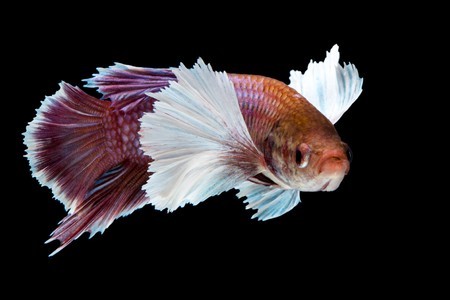
(Elephant Ear Betta, male)
So you’re considering a betta?

(Male veil tail betta, female betta)
Betta tie with goldfish for being some of the most abused, misunderstood fish on the market. If you have a betta fish and reading this alarms you please don’t be too upset, in all likelihood you were given bad information or no information when you acquired one. I’m not here to pass judgment on you, but I am here to help you set things up so your fish leads a long and happy life!
The betta is an egglaying variety of fish but interestingly enough they do so with bubble nests. The male attempts to attract a female by blowing bubbles in a tight formation, usually in the corner of the tank. If your betta starts doing this it means he feels comfortable an safe!
They are from the gourami family of which there are over 133 recognized species!
Tank Size
It’s not uncommon to see a betta fish in a small tank or even vases and there are a huge variety of ‘tanks’ being sold that specifically claim to be for bettas. Betta should never, ever, ever, be housed in less than 2.5 gallons and even then I frown on something of that size, but it’s way more preferable to anything smaller. 3+ gallons are far better. Many of the ‘tanks’ that claim to be for betta are even less than 1 gallon! That’s the equivalent of your house being the size of a small closet. Sure you could live in that but it won't be pleasant at all.
Not only are they too small but many of them lack filtration or heaters and don’t even have the room for either! Betta require tropical temperatures, so between 75°-80° degrees Fahrenheit (23°-26° Celsius), like any fish they also require a filter (which also brings oxygen into the water).
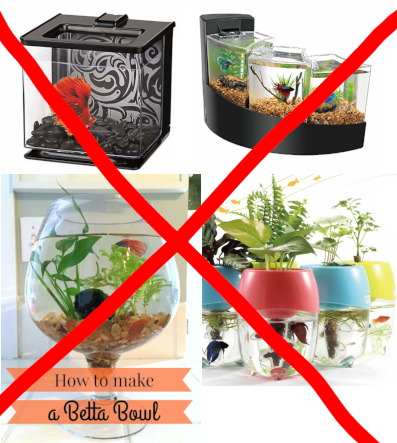
There are good quality 3-5 gallon tanks that you can get and set up easily enough. I keep my betta in a 7.5 gallon planted tank. You can even just buy all the different parts you need to set up your own beautiful tank as 5-gallon basic tanks aren’t very expensive at all!
Some stores also sell ‘betta plants’ that they claim the fish will nibble on the roots for nutrition. Sure. A starving fish will nibble on anything to survive but they are primarily carnivorous. Not only are the plants starving the poor fish they also take up a lot of the surface area of the water, or even block it off completely! Betta are labyrinth fish meaning they can gulp air to get extra oxygen so it’s important that they have access to the surface of their water. Add to that that a tank filter isn’t just to clean the water of waste, but also to aerate the water to bring in more oxygen for your fish.
Types of betta:
Betta are being bred not only by hobbyists but professionals and over the years a bigger and bigger variety of them have become available. When I was just a kid, over 20 years ago, there were no varieties listed they’d just be ‘betta fish’.
Vieltail
The most basic variety are the ones I saw as a kid, they’re known as veil tails. This variety is so common that they aren’t even allowed to compete in betta shows (like dog shows but for betta fish!). Just because they are common doesn’t mean you shouldn’t get one! They’re still very beautiful and come in a variety of colors. They are called veiltail because their tail resembles a draping vail.
Combtail
Combtail betta can have any shaped tail or fins, but they also have extra extensions almost like fingers.
Crowntail
Crowntails are like the combtail on steroids. At least half their tail is made up with the trailing fingers, rather than just a short bit on the end.
Delta/Super Delta
These guys are rather stunning as their tails are symmetrical (if an ideal example) with the same amount of tail above and below and spread out evenly with no draping or drooping.
Double Tail
As it says on the tin. They don’t have a split tail but rather literally two tails! The two tails can be in different sizes.
Half-moon/Over- half-moon
These fellows have tails even bigger than the delta/super delta mentioned above, about 180 degrees and some even over that. That severe of a tail can lead to them being more easily damaged, try to avoid anything sharp or rough in their tank.
Halfsun
Sort of a mix between a combtail and a half-moon tailed variety with a dash of delta. They have full flowing tails with a bit of a fringe at the edge.
Plakat
For this variety, their tails are much shorter, but still fanned out and beautiful. Due to their short tails, they’re much less likely to be damaged.
Rosetail/Feathertail
These lovely boys are tails that are so full they look feathery!
Roundtail
Their tail is even fuller and round than the plakat a bit like a D shape.
Spadetail
Where the roundtail has a nicely rounded tail the tip of the spadetail’s fin comes to a little point!
Elephant Ear
With these, it’s less about the shape of the tail and rather the shape of the fins. They’re very big! The featured image of this post is of one!
Those are just the tail shapes, as to their color patterns? Here is a quick list of color types:
Butterfly, koi, Cambodian, marble, dragon (avoid this variety as they often get scales growing over their eyes), mask, multi-colored, piebald (like marbled but different!), solid, wild type (less vivid colors, closer to how they appear in the wild).
The colors they come in are across the spectrum, including albino. Finding the color, pattern and tail combo you like may be a challenge, but betta fish are easy to find and easy to take care of.
Recently a new variety has come to market known as ‘kings’ this just signifies them as being a super-sized betta! I have a half-moon wild type betta and he is easily twice the size of regular betta.
Good Tankmates
If you have a smaller tank, like a 3-5 gallon I suggest keeping your betta solo as they are very territorial! They can be housed with snails though, but make sure to introduce the betta to the tank first or he may kill anything that was in the tank before him to establish his territory.
Betta have wildly different personalities, one person will have a peaceful community friendly betta and another will have a ‘Kill all trespassers!’ variety. It needs to be stated that males and females don’t really get along very well. I also don’t suggest breeding them as they are already heavily bred professionally and by hobbyists. Only try breeding if you are very very serious about it and have the room for them.
I have successfully kept my king betta with other fish in a large tank that gives both him and the tankmates to move around in. As long as they have a buffer a betta shooould be willing to play nice. Be warned though, this may not be the same for you. I would also suggest avoiding putting them in a tank with another fish that has a big flowing tail.
Betta also move up and down the tank meaning, no territory is really safe from an aggressive betta. Cory catfish may work in a large tank, tetra may be quick enough to avoid an aggressive betta but keep a close eye on them to make sure he isn’t overly stressing them out. It’s a lot of trial and error.
Feeding
There are a lot of different foods you can feed to your betta but make sure to get food specially formulated for them. Also, try to mix up the variety of food you give them. Frozen small foods such as bloodworms, brine shrimp, krill and the like make good treats but not as a regular part of their diet.
Make sure to only give them a few pellets at a time, as their stomach is only about as big as their eyeball and they can be very greedy eaters and you can overfeed them! Yes, betta can get fat!
Tank Temperature
75°-80° degrees Fahrenheit (23°-26° Celsius)
Final Words
Betta are some of the best beginner fish as long as they’re given a good home. They’re full of personality, they live 3-5 years, are very hardy and easy to care for. They’re personally one of my favorite fish and I never tire of them!
If you want to find a rarer type of betta ask around online, speak to local aquarium clubs and you’ll definitely find a breeder who can help you out.
#betta#siamese fighting fish#betta fish#fishblr#aquarium keeping#freshwater aquarium#freshwater fish
33 notes
·
View notes
Text
Mini-Post #2 What to do if you can’t care for your fish anymore.
No one really wants to give up a pet but sometimes mistakes are made or your life changes and you can no longer care for your pet. This post will give you an idea of what to do in this situation.

The most important point I want to make is this: NEVER release ANY pet you have into the wild. At best you are just killing it in a slow and painful process at worst it thrives, why is this the worst? Because we have a major problem of invasive species devastating environments around the world. Goldfish will out compete local fish and drive them out, red-eared sliders are very aggressive and are driving other turtle species towards extinction. In Florida snakes, chameleon, and iguanas are killing local species and destroying the vegetation.
If you are no longer able to care for your pet fish (or other aquatic creatures) you do have a wealth of options. You can either rehome them by listing them on craigslist or facebook or call your local humane societies who may be able to take them in or will be able to direct you to specialized rescue groups. You can also use google to try to find a local rescue group in your area! Yes! There are fish rescue groups!
A few tips for trying to rehome your pets: Make sure to offer the tank and all the equipment, this will greatly increase your chances. Ask the potential new owner a lot of questions to make sure they know what they’re getting into, hopefully, you’ll find someone who is very experienced in the hobby, I suggest those people before the new folks unless you have very beginner friendly fish. You can offer a rehoming fee but please don’t list the price too high! I’ve seen people offering a full tank setup with fish for the exact same price as new equipment. In these cases why would someone buy a used setup? It’ll cost you as much as a new one and with the new one, you won’t have to deal with the hassle of transporting fish and cleaning possible gunk from the equipment. You are trying to find a new home, not recoup the money spent on the hobby.
Summary:
You have a lot of options on what to do if you can no longer keep your pets. Do the responsible thing and find a proper home for them. Never release any pet into the wild!
Good luck and hopefully your pets have a good long happy life!
15 notes
·
View notes
Text
Ooo that set up sounds wonderful! I plan on adding shrimp to my 20g as soon as the moss I set up has spread around and given them shelter. Happy to hear you’re loving the hobby!
anyone have any tips on how to bring down water hardness for my betta? I have driftwood, water is testing around 150/180gh/kh. will boiling/scrubbing/cleaning the driftwood help?
8 notes
·
View notes
Text
Best Beginner Fish
Here are some of the best fish for Beginners!
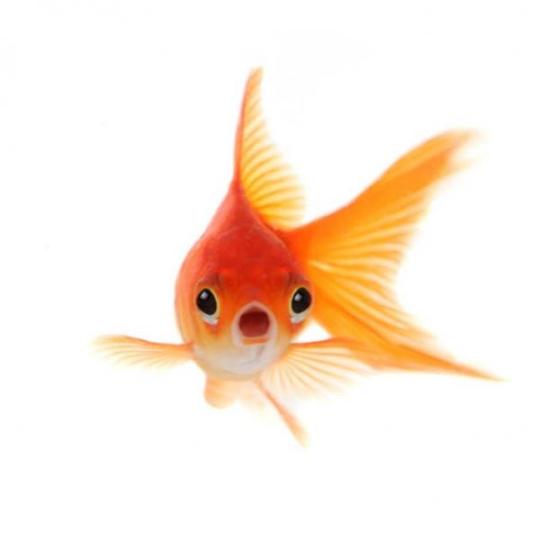
Goldfish
NO. NO. BAD! Put that goldfish back where you found it or so help me I’ll turn this blog around!
Goldfish are absolutely the worst fish for beginners, not only do they grow very big (the smallest are still seven to ten inches long) but they require special attention and care that goes above and beyond more beginner friendly fish. They produce ammonia from their skin, not just their waste... and their waste! They have such a short digestive system they’re effectively eating and pooping constantly. They’re very easy to overfeed, require very large tanks, yes even the smaller varieties shouldn’t be kept in anything under 30 gallons and that means you can really only have one.
Sure you can go into any pet store and get a goldfish for less than a dollar, or free at fairs! But this is only because they’re very easy to breed, have big spawns.

I am not joking around when I say goldfish get big. This is an extreme example but should do a good job of getting the point across.
There are a lot of myths around goldfish and it’s very infuriating. Fish do not grow to the size of their tank, while many do stop appearing to grow (goldfish are like this) it profoundly reduces their lifespan, their organs also continue to grow causing them extreme discomfort and again, reducing their lifespan. I’ve heard people brag about ‘Oh my goldfish lived for two years!’ That’s the equivalent of bragging about your cat or dog living for a year. A healthy goldfish’s lifespan is up to 25 years, with some extremes getting up to 50.
If you have acquired goldfish and can’t afford to give them at least the bare basics of their needs then please contact a fish rescue or a locally owned aquarium store. It may take a little effort to find someone depending on your area, you can also try to find someone willing to adopt the fish from you, just make sure to ask if they can take care of them when they’re fully grown.
Minimum Tank Size: 30 gallons. (55 is better)
Now onto the real list.
Guppies
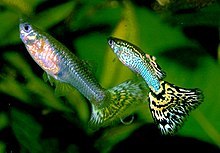
(Yellow Cobra Guppy, female and male)
My previous post goes into a lot of detail about these little guys but they are ideal for beginners. They don’t require any special care and attention beyond that of most livebearing fish. They’re colorful, small, easy to come by and fun to watch!
Minimum tank size: 5 gallons
Mollies
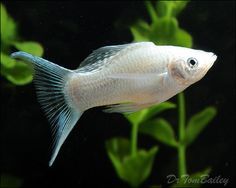
(Platinum Lyretail Molly Male)
While mollies don’t come in the same variety of colors as guppies do they’re a little bit bigger. They are also livebearers meaning they breed very easily, even if you don’t really want to, but like most fish they’ll eat the fry, making the matter solve itself. They’re very peaceful and not as quick moving as guppies but still a pleasure to have, they also make excellent tankmates with other community fish.
Minimum tank size: 15 gallons
Platies
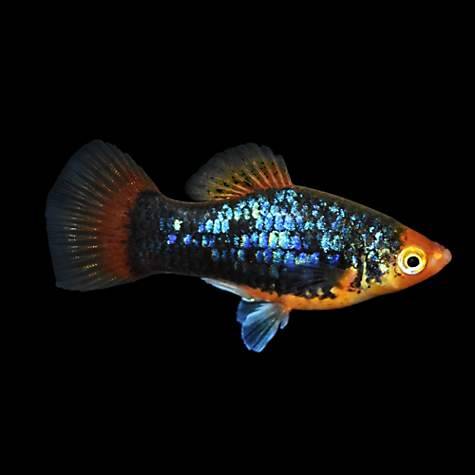
(Rainbow Platy Male?)
Platies and Mollies are a lot alike and to the more inexperienced they’re hard to tell apart. However, they are a different sub-species of the (Xiphophorus genus) so won’t crossbreed and they have similar temperaments and you can keep them all in a single community tank. Platies are however bigger than mollies.
Minimum Tank Size: 15+ gallons
Swordtails
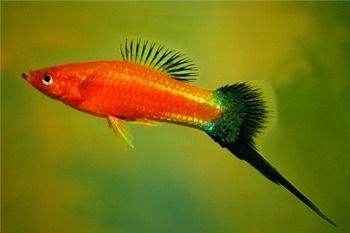
(Painted Swordtail Male)
Swordtails, however, are a variation of platies so they can crossbreed. This won't create any kind of hybrid that’s of questionable ethics but people often prefer pure platies and pure swordtails. The main difference between them is the males have a long protrusion from the bottom of their tail fine, like a sword! The females lack this trait.
Minimum Tank Size: 15+ gallons
Bettas

(Rosetail? Betta Male)
Betta fish, much like goldfish, are misunderstood and a lot of lies are told about them. It’s made worse by the fact that dozens of nano tanks are labeled ‘betta tanks’ that in no way should ever house a betta permanently.
However, they make excellent beginner fish! They’re tough, able to handle PH that is high or low (but does not fluctuate wildly, all fish require stable PH). A few things to know about the betta: They only do well with other fish when kept in a large tank where they can feel comfortable and keep their own ‘territory’, they may try to eat much smaller fish and can even kill fish bigger than themselves. I’ll do a detailed post about betta fish to expand on how to be a proper betta parent.
IMPORTANT ADDENDUM: Betta fish require heaters! Their ideal temperature range is 79 degrees Fahrenheit (26 c)! They also are carnivorous and can NOT survive off a plant. Betta plants are a lie, and cruel. They also require filtration. Full stop.
Minimum Tank Size: 5 gallons (when they are the solo fish)
Tetras

(Neon Tetra)
Tetras are another excellent starter fish, brightly colored, they come in a wide variety of colors, shapes, and sizes. They’re schooling fish so they should never be kept in a smaller group than five, the more in the school the better. They also only school with their own variety, so neons with neons, embers with embers. They range in size from .8 (2cm) inch to 3 inches. The smaller tetras can be kept in a smaller tank and still have enough of them to comfortably school together.
Minimum Tank Size: 5 gallons for the smaller variety 10+ for the larger.
Danios

(Longfin Zebra Danio)
Danios don’t come in as big a variety of brilliant colors as some of the other fish on this list but are still a charming addition to any tank. They are schooling fish as well so make sure you have at the bare minimum five, but more is better. They’re another peaceful community fish, except for the giant danio variety which considers smaller fish to be food. They range in size from 1.5 inches to 4 inches (the giant variety) but average out to about 2 inches.
Minimum Tank Size: 10 gallons
Corydoras

Corydoras, or more commonly known as ‘cory cats’ are a fun bottom dwelling variety of catfish that tend not to get very large. They range from 1.5 inches up to 3 inches. They are schooling fish and again, require at least five other schooling fish, I specify schooling fish instead of other cories because they will school with anything! Ideally, though you should give them other cory friends but unlike tetras, any of the cory types will school together. These are also one of the most peaceful fish you can put into your tank and make excellent cleanup crews, eating algae (it isn’t a staple of their diet but they do nibble), and leftover food. Make sure you do keep an eye on them and give them supplementary food specially formulated for cories/loaches.
Minimum tank size: 10+ gallons
I could list a few more fish but this post is already getting on the long side! I’ll end it here. Expect more fish details soon!
139 notes
·
View notes
Text
Algae
Algae, the green menace, the bane of pools, ponds, and aquariums!
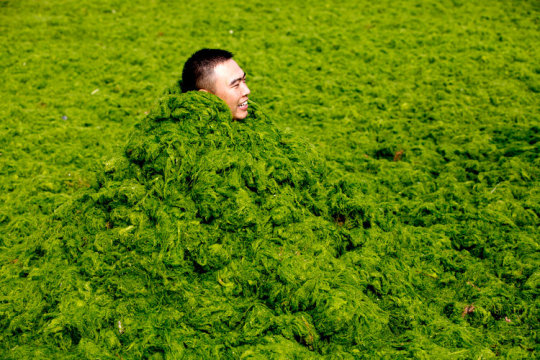
And apparently Chinese beaches...
Today I’ll take about what causes it, what kinds there are and how to take care of it!
I’d be impressed to meet someone who doesn’t know what algae is, it’s a rather ubiquitous plant found all around the world, in virtually every waterway and will happily set up shop in untreated pools, ponds regardless of size and aquariums.
What is Algae?
Algae are basically a plant but... very different from the plants you’re familiar with. They lack a majority of the features we’re used to seeing in plants, no stems, no roots, just a very basic structure. Some are unicellular (Single cell organism, like Chlorella) and some are multicellular (Multi-cellular organism, like giant kelp).
The most common kinds of algae you find in aquariums are: Black Beard Algae, Blanket Weed, Blue-Green Algae (Not actually an algae but a cyanobacteria), Brown Algae, Fuzz Algae, Green Aquarium Water Algae (monocular so it reproduces insanely fast), Green Dust Algae, Green Spot Algae, Hair/Thread Algae, Oedogonium Algae, Rhizoclonium Algae, Spirogyra, Staghorn Algae.
The best way to figure out which you have is to enter in some descriptive words about what your algae look like and you should get the right answers right away. This is just a quick post so I won't be going into too much detail about the individual types of algae and how to treat each of them.
What Causes Algae?
Bright light, especially full-spectrum light, and live plants are all the most common causes of algae in your aquarium. Algae hitch a ride on the plants and if it finds the conditions favorable enough it’ll happily take up residence. So having non-planted tank should help you avoid a lot of these if it’s a hassle you rather not deal with. But don’t feel bad if you end up with an algae bloom in your tank, it’s just one of those things that are going to happen.
Generally falling back on water changes, not keeping on top of your tanks parameters (especially nitrate/nitrite levels) and not cleaning off the walls of the tank or scrubbing off decorations periodically. When cleaning decorations you can boil them if wood, or just use a toothbrush on the non-wood decor, but make sure to drop it in your tank change water that’s being dechlorinated so you don’t add too much chlorine into your tank and disrupt the benefitial bacteria. Overfeeding can also cause a bloom.
So don’t fall back on your water chances and keep an eye on the water conditions regularly! If you get a really bad bloom chances are something has gone wrong in your tank.
How to Deal With Algae?
Getting ahead of the problem is one of the better ways of dealing with algae. After your tank is established (about a month if it isn’t planted) I would recommend getting some algae eating critters. If you have a small tank you can get snails, such as: nerite snails, algae eaters (A variety of fish that enjoy eating algae) and amano shrimp. If you have a bigger tank you have a bigger variety of options, nerite snails, apple snails, mystery snails, Bristlenose catfish (also called Bristlenose plecos) these guys get up to 4-5 inches long so keep that in mind when buying them and make certain your tank is big enough to house them at adult size, Otocinclus catfish (these are super cute, very peaceful and work best in an established planted tank, they get about 2 inches), Rosy Barbs,(WARNING these guys get up to six inches! Only for big tanks!), Mollies (get between 2.5 and 3 inches so good for smaller tanks), and American Flagfish (These stay under 3 inches). Some neocaridina shrimp help as well!
UV sterilizes are also help but they’re on the pricer side, if you have a friend with one that is probably a good way to go. You could also darken your tank (no lights, shade the window) and not feed your fish over the weekend, which shouldn’t harm them.
I personally prefer to deal with it naturally but there are chemicals you can use, such as Tetra Algae Control, API Algaefix. Make sure to read the instructions very carefully and follow them to the letter.
Summation
Keep on top of your water paramaters, don’t skip water chances, avoid over feeding and keep algae eaters in your tank and hopefully you wont have too much of an issue!
25 notes
·
View notes
Text
Species Spotlight #1: The Guppy

The humble guppy... even people who aren’t in the hobby are aware of this fish! The males are well known for their beautiful colors and the variety of colors you can find them in these days is honestly astonishing! Back when I was a child you’d be lucky to find 3 different colors. Selective breeding, however, has given us a wealth of choices.
The guppy (Poecilia reticulata), also known as millionfish and rainbow fish is one of the most common freshwater fish found in the aquarium hobby, only behind the goldfish. They are perfect for beginnings and their bright colors are very attractive, they’re also very hardy, easy to take care of and fairly active fish.
They originated in north-eastern areas of South America but can now be found in waterways around the world due to people releasing them intentionally or unintentionally into different waters. Guppies were first described in 1859, their common name is actually given to them to honor Robert John Lechmere Guppy who was the first westerner to discover them! In the wild, the males are more colorful than the females but nowhere near as bright and diverse as the domesticated versions found in the aquarium trade.

(Male above, two females below)
So you're considering guppies?
While guppies are some of the smaller fish found in the freshwater aquarium trade they still shouldn’t be kept in smaller tanks, especially not nano tanks as they can grow over two inches in length (females being larger than the males). They need room to swim and you should ideally keep two females per male, so if you really want a colorful tank that means getting a good sized one to accommodate the gender split.
Guppies are also livebearing fish, meaning they will breed profusely, but this shouldn’t be too much of an issue as both parents will eat their fry and unless you intentionally want them to survive and give them hiding places only a handful will likely make it past the fry stage. Guppies can actually be bred to feed larger carnivore fish as they breed so readily.
They’re able to handle a wide range of PH, from softer water to hard water, as someone who lives in a hard water area there are no challenges keeping them healthy and happy here so don’t worry too much about the PH of your water... unless it fluctuates wildly, that will stress them out and could cause a die off.
They are good community fish as they are generally peaceful, though the males may nip at the fins of other colorful fish, but they’re unlikely to really be bullies unless the tank is too small and overstocked.
Guppies are primarily a mid-level fish, meaning they keep to the middle of the tank but will pop up and down between the levels. They should not be kept with fish that are aggressive (many cichlids will not get along with them), angelfish are popular but will not take a liking to guppies in their tank.
Good tankmates are: corydoras and really virtually any small catfish (emphasis on small), algae eaters, shrimp, snails, other livebearers (platies, swordtails).
Avoid: Cichlids and large aggressive fish.
Tank Size: While you could keep a few in a five-gallon tank I’d suggest no more than 3 (two females, one male), ideally you should have a 10 gallon so they have more room and you can have more of them. The general rule of thumb is 1 inch of fish per gallon of tank. Since guppies get between 2.5-3 inches big that means in a 10 gallon of only guppies you can get about six (with a good filtration). Smaller tanks are actually not recommended for beginners as there is a much smaller margin of error and when something goes wrong in a small tank it quickly spirals out of control. My suggestion is a 20-gallon tank, this way you can have some snails (2 at the most), some corries (at least 3) and a selection of livebearers.
Feeding: Guppies are very easy to feed, most any tropical fakes will work but make sure to crush them into smaller flakes between your fingertips. Don’t overfeed if you can avoid it! Sprinkle in as much as they can eat in a few minutes and no more. If you need to turn the filters off to keep the flakes from being driven hither and thither this is fine. Just remember to turn it back on!
Tank Temperature: Like most tropical freshwater fish they prefer warmer waters So between 75 and 80 degrees Fahrenheit (24-26.5 C). To maintain this temperature you will more than likely need a tank heater, in fact, I would insist you have one as too much of a fluctuation in temperature will stress the fish.
Final words: Guppies are a wonderful starter fish, they only live an average of 2 years so you’ll have them long enough to know if you really enjoy the hobby. Some fish can live up to five years... others? Over 20. I strongly recommend these fish for people with small children (though you may have to take over tank maintenance but it’s really easy!) or people just getting into the hobby. They’re so colorful and fun to watch!
14 notes
·
View notes